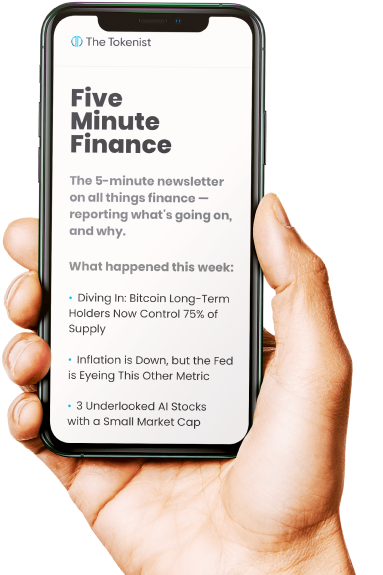
Oracle: Should You Buy the Dip or Ignore the Bubble Before Earnings?
Oracle Corporation (ORCL) finds itself at a critical juncture, with its stock down approximately 40% from recent highs while analysts remain deeply divided on its future trajectory. The enterprise software giant’s massive AI infrastructure bet, particularly its contentious $300 billion OpenAI contract, has sparked intense debate about whether the current price represents a compelling buying opportunity or a value trap.
With the stock trading around $205 and sporting a lofty P/E ratio of 47, investors must navigate conflicting signals from Wall Street analysts and mounting concerns about the company’s aggressive capital expenditure plans.
Analyst Targets Split from $175 to $430 as OpenAI Exposure Raises Concerns
The analyst community remains starkly divided on Oracle’s prospects, with price targets ranging from a conservative $175 to an ambitious $430. Deutsche Bank stands firmly bullish, maintaining its Buy rating with a $375 target, arguing that the market is giving Oracle “little if any credit” for its OpenAI business at current levels around $200.
The firm’s analysis suggests that even excluding all OpenAI-related revenues, Oracle could still achieve earnings per share of $15 and free cash flow of $26 billion by fiscal 2030, indicating substantial underlying value in the core business.
However, DA Davidson analyst Gil Luria presents a sharply contrasting view, slashing his price target from $300 to just $200 while maintaining a neutral stance. Luria’s concerns center on Oracle’s transparency regarding its backlog composition, noting that “when Oracle reported earnings on 9/9, the company made it seem like several customers represented the increase in backlog, yet we found out the next day that OpenAI represented almost the entire increase.”
This revelation has raised questions about Oracle’s customer concentration risk and the reliability of its growth narrative.
The divergence extends beyond individual targets, with Oracle maintaining strong institutional support despite recent volatility. The stock continues to trade at premium multiples, with a forward P/E of 29.94 and an enterprise value to revenue ratio of 11.50, suggesting that many investors still believe in the company’s AI transformation story. Recent trading data shows the stock bouncing between support at $202 and resistance at $210, indicating a technical battle between bulls and bears at these crucial levels.
Join our Telegram group and never miss a breaking digital asset story.
Weighing the AI Hype Against Financial Reality
The elephant in the room remains Oracle’s astronomical valuation metrics and its dependence on the OpenAI partnership. With OpenAI announcing over $1 trillion in AI data center contracts across multiple partners, questions arise about whether Oracle was merely “a pawn in the grand game of fake it ’till you make it,” as DA Davidson suggests.
The company’s PEG ratio of 2.0 sits at the extreme end of what value investors typically consider acceptable, particularly given the uncertainty surrounding AI infrastructure monetization timelines.
Deutsche Bank’s analysis provides a counterpoint to bubble fears, suggesting that the market’s current skepticism may actually present opportunity. Their bear case scenario, which completely excludes OpenAI revenues, still projects respectable earnings of $17 per share and $31 billion in free cash flow by 2030. This implies that Oracle’s core database and enterprise software businesses remain robust profit generators, potentially providing a floor for the stock price even if AI ambitions fall short.
The financial flexibility around Oracle’s lease obligations adds another dimension to the bubble debate. While critics worry about long-term commitments tied to uncertain AI demand, Deutsche Bank notes “good deal of flexibility/fungibility around these leases,” suggesting Oracle isn’t as locked into costly infrastructure as bears fear.
Even if burdened with 50% of estimated lease expenses from foregone OpenAI business, the company could still deliver meaningful shareholder returns, offering some protection against a complete AI bubble collapse.
Oracle’s Fundamentals Show Profitability, but Cash Flow Remains a Concern
Oracle’s fundamental metrics reveal both strength and concern, with the company sporting a market capitalization of $584 billion and impressive trailing twelve-month revenues of $59 billion. The profit margin of 21.08% and return on equity of 69.24% demonstrate Oracle’s ability to generate substantial returns from its mature software business.
However, the negative levered free cash flow of -$2.83 billion raises red flags about near-term cash generation amid heavy infrastructure investments.
The stock’s technical indicators suggest oversold conditions after its recent 27% decline year-to-date, with the RSI pointing to potential near-term bounce opportunities. Trading volume has surged to 26 million shares daily, well above the average of 26.7 million, indicating heightened investor interest at current levels. The beta of 1.64 confirms Oracle’s amplified sensitivity to market movements, making it particularly vulnerable to broader tech sector volatility.
Looking ahead, Oracle’s December 8, 2025 earnings report looms as a critical catalyst that could either validate the bulls’ infrastructure thesis or confirm bears’ concerns about unsustainable spending. With analyst estimates clustering around $1.48 in quarterly earnings, any meaningful deviation could trigger significant price movement.
The company’s forward dividend yield of 0.98% provides minimal income support, meaning investors are betting almost entirely on capital appreciation driven by AI infrastructure success.
Disclaimer: The author does not hold or have a position in any securities discussed in the article. All stock prices were quoted at the time of writing.




